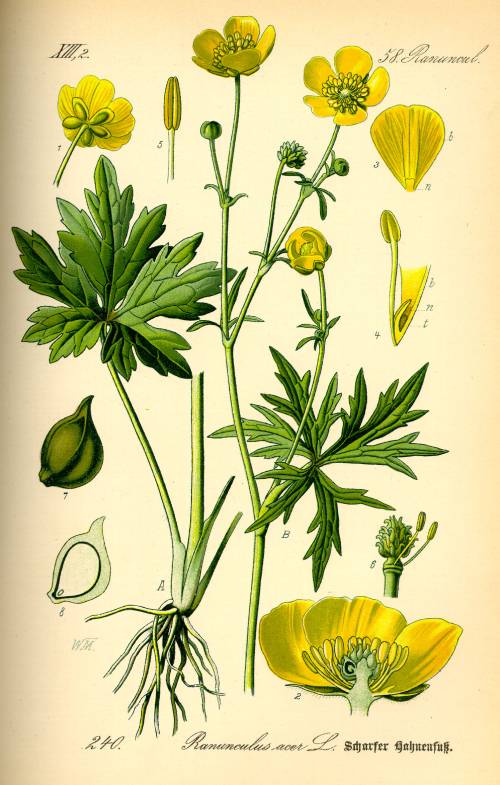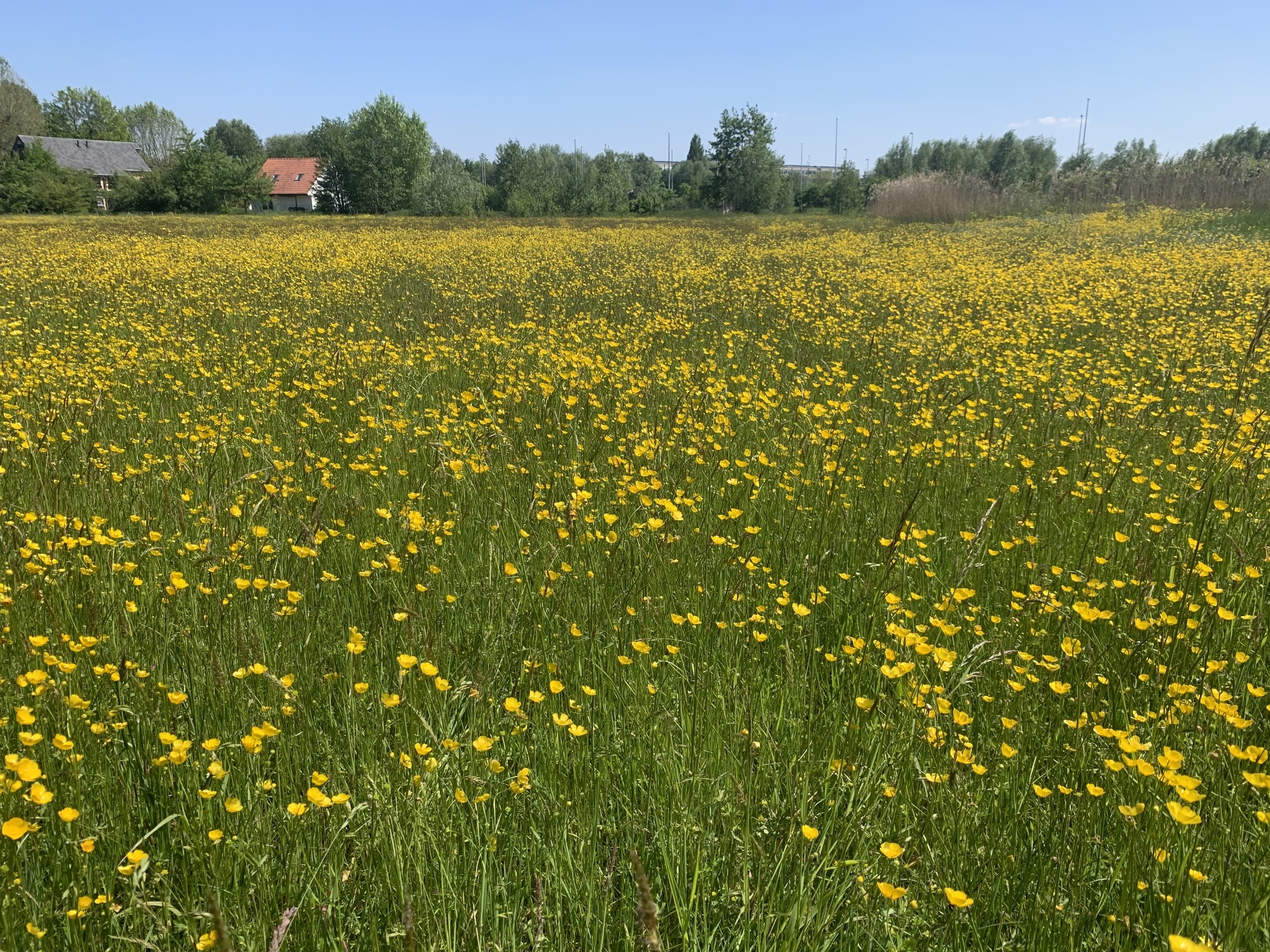Tall buttercup identification and control
Information about the weed of concern tall buttercup. Tall buttercup is also known by its scientific name, Ranunculus acris.
About this weed
Tall buttercup is a weed of concern in King County. This means control is not required, but always recommended, and new plantings are discouraged.
Tall buttercup is known as Ranunculus acris, and it is in the buttercup family. Other common names include meadow buttercup, common buttercup, and giant buttercup.

Why it's a problem
Its main impact is to livestock, fresh tall buttercup plants are toxic to grazing animals. Further, it can dominate a pasture or meadow given the opportunity, especially with acid soils and/or over-grazing. In natural spaces like prairie or grassland habitat it can hinder growth of native species if allowed to grow and spread.
Plant description
Tall buttercup is a perennial plant (2+ year life cycle) that grow upright, 1-3 feet tall. Plants spreads through seeds and rhizomes (sideways spreading root systems).
Originally from Europe and Asia, tall buttercup can be found in a variety of habitats, including wet lowlands and rich woodlands. It is a common weed in pastures, meadows, and along roadsides.
Young plants start as rosettes (low growing, circular arrangements of leaves). First true leaves are hairy, round to heart-shaped, and shallowly lobed and toothed.
Mature leaves change in shape as they get higher on the stem. Lower leaves are cut/lobed, but cuts get deeper (less/thinner leaf parts) as they get higher along the stalk. Leaf stalks are sparsely covered in long hairs.
Bright yellow flowers grow at the top of long, hollow stalks that branch towards the top. Flowers are about 1 inch across and have 5 to 7 glossy petals.








Be aware of look-alike plants
Tall buttercup is often confused with:
Creeping buttercup (Ranunculus repens): a closely related species, also on the Weed of Concern list. Creeping buttercup is generally more low growing, have less sharp leaf edges, less hairy stems, and are darker green.
When in doubt, take photos and report them on iNaturalist.
What to do if you find it
Because tall buttercup is so widespread, property owners in King County are not required to control it. We can provide advice on how to control tall buttercup, but there is generally no legal requirement to do so. Control is recommended where animals are grazing and in natural areas being restored to native plants, where feasible.
Control methods
We recommend using a combination of methods to control weeds. In areas with few weeds, it is important to act quickly before they become harder to control. Make a long-term plan as it often takes several years to get rid of most weeds. Start in the least infested areas first and then move into more heavily infested areas.
In lawns and pastures, promote healthy grass by over-seeding, fertilizing as needed, and not over-grazing. Adding lime can improve grass health and keep buttercup from re-establishing. However, lime won’t control buttercup that is already well-established.
Improve soil drainage. Reduce compaction by aerating and avoid trampling when soils are wet.
Clean mowers and other equipment to avoid spreading buttercup seeds to un-infested areas.
While doing control, protect native and beneficial species.
Manual control
Digging is most effective from fall to spring while the soil is not hard, and roots won’t break off as much.
Stem and root fragments left behind can produce new plants, be careful to remove all roots and plant runners.
Disturbance of the soil can increase seed germination. Seeds can live in the soil for many years, so keep an eye on the area even if only removing a few plants.
Mechanical control
Mowing alone is not effective.
Regular cultivation can kill the buttercup, but it will likely come back if regular cultivation stops.
Chemical control
Stay safe when using herbicide:
- Always read the label before use.
- Wear a long-sleeved shirt, long pants, shoes, and eye protection.
- Follow state and local regulations.
"Selective" broadleaf herbicides can be applied over grassy areas with infests.
Non-selective herbicides (e.g. glyphosate) can be applied to actively growing plants before they seed. Glyphosate is “non-selective” and can harm non-targeted plants and grasses.
It will probably take 2-3 applications to eradicate tall buttercup.
Monitor the treated area for re-growth and pull up any new seedlings before they establish runners. Re-seed or re-plant bare areas after removing buttercup to keep it from re-infesting the area.
See the PNW Pest Management Handbook for the most up to date and specific method for chemical control of tall buttercup. The posted link is for creeping buttercup, which is a different species, but control methods should be very similar and effective.
Disposal instructions
Plants that do not have flowers or seeds can be put into yard waste bins. We don’t recommend home composting fresh plants because plants can regrow from roots and runners. These plants can also be left on thick cardboard or tarps and left out to dry. Once dried, you can spread the plant matter as mulch in the area where it had been growing (again, only if seeds and flowers are not present).
Plants that have flowers or seeds should be bagged and disposed of in the garbage.
Noxious Weed Disposal - Washington State Noxious Weed Control Board

 Translate
Translate